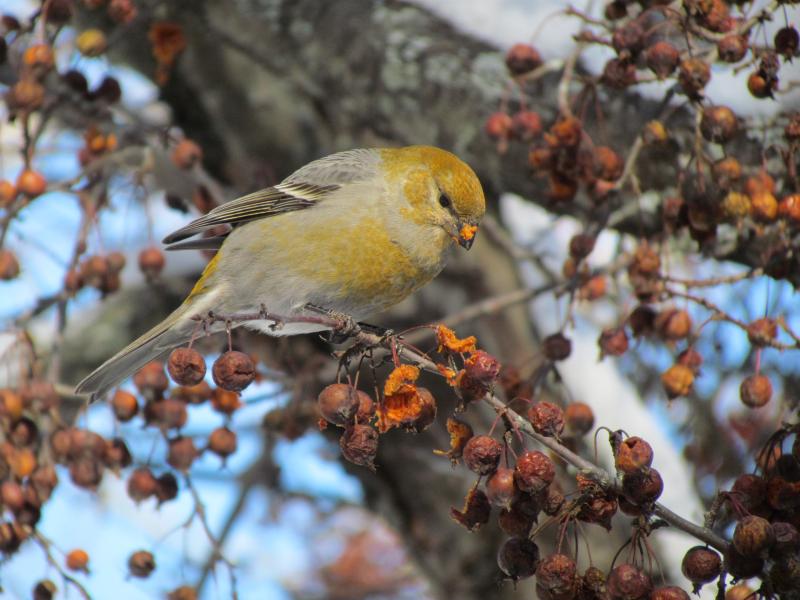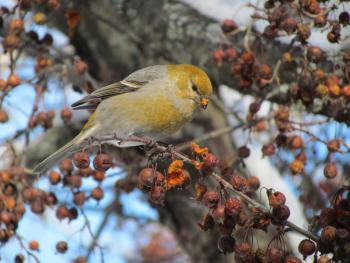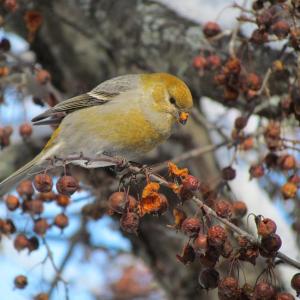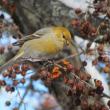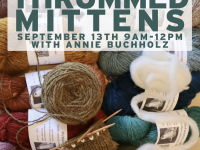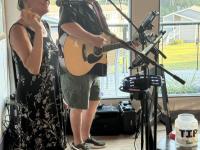Audubon Christmas Bird Count: 121 Years and Counting
The day started with the temperature in the single digits. It was the day of the 121st annual Audubon Christmas Bird Count (CBC). The CBCs take place in the period spanning from mid-December through early January. The count was started as a sort of protest to a practice known as the Christmas hunt, when hunters would go out around the holidays and see how many birds (and presumably other creatures as well) they could shoot. Frank Chapman--a prominent ornithologist, conservationist, and writer/editor who published an early wildlife conservation magazine—invited his readers in 1900 to begin a tradition of counting rather than hunting birds around the holiday season. Twenty-seven people participated in 25 counts that first year.
The idea caught on.
Today there are thousands of Christmas Bird Counts that take place across the U.S., Canada, and the world. In fact, last year there were more than 2,600 Christmas Bird Counts and more than 81,000 participants. Each count has an established 15-mile diameter circular count area. The circle is typically divided into smaller units with different teams of volunteer observers assigned to each. On a pre-arranged date, all teams go out and count the number of birds of each species they can identify within their assigned area. Each count has a volunteer compiler who sums up all of the lists and inputs the total numbers for each species into Audubon’s Christmas Bird Count database.
In this year of COVID, many Christmas Bird Counts have been canceled; others are taking place with fewer participants to ensure safe distancing. We have always counted ourselves as fortunate that the Augusta Christmas Bird Count circle encompasses our home and neighborhood in Gardiner so that we can just step outside and begin counting the birds. That was especially nice during these COVID times. The Augusta count has not been going on since 1900, but it does have an impressive 50-year history, having been started in 1970.
It is always amazing what you can see when you spend hours walking around a place. Right at our own feeders we were able to count the song sparrows, white-throated sparrows, and dark-eyed juncos that have been present despite the onset of snow and cold. We found another yard a couple of miles away that had an impressive flock of at least seven white-throated sparrows and some more juncos. One species we could not find on the count day was American tree sparrow despite the fact that we had several at our own bird feeders only a few days earlier.
We had some fun encounters with bird-eating hawks including everything from a small, dark merlin to a hefty, sharp-eyed Cooper’s hawk to a large, immature peregrine falcon that kept the downtown pigeons on alert. And we found one each of Carolina wren and red-bellied woodpecker—two species that have shifted their ranges northward into Maine over recent decades, almost certainly because of warmer winter conditions as a result of climate change.
But the highlight of the count for us had to be the winter finches. As we wrote about in an earlier column, there has been an unusually large irruption of Boreal Forest-breeding finches occurring south into the U.S. Evidence of the irruption began in the late fall. In our count area, we enjoyed seeing small numbers of pine siskins and common redpolls. We were surprised to find two white-winged crossbills, too.
“Delight” is the best word to describe how we felt at multiple times during the day when we encountered flocks of one of the largest of the winter finch arrivals: pine grosbeaks. There were dozens of them quietly feeding in crabapple trees around town, and most allowed close approach, so we were able to watch them diligently dismantling the frozen fruits to eat the pulp and the seeds. Despite what many of us were told as kids about the dangers of eating apple seeds, the seeds are apparently quite rich in proteins and lipids and have only tiny amounts of a compound that can convert to cyanide in the body. The pine grosbeaks we saw seemed to be relishing the apple seeds as they mushed up the apples to get to them. We were surprised to find a couple of goldfinches getting into the act and extracting apple seeds from the crabapples.
The things you see on a Christmas Bird Count made the seven and a half miles of walking we did during the day well worth it.
Jeffrey V. Wells, Ph.D., is a Fellow of the Cornell Lab of Ornithology and Vice President of Boreal Conservation for National Audubon. Dr. Wells is one of the nation's leading bird experts and conservation biologists and author of the “Birder’s Conservation Handbook.” His grandfather, the late John Chase, was a columnist for the Boothbay Register for many years. Allison Childs Wells, formerly of the Cornell Lab of Ornithology, is a senior director at the Natural Resources Council of Maine, a nonprofit membership organization working statewide to protect the nature of Maine. Both are widely published natural history writers and are the authors of the popular book, “Maine’s Favorite Birds” (Tilbury House) and “Birds of Aruba, Bonaire, and Curaçao: A Site and Field Guide,” (Cornell University Press).
Event Date
Address
United States

